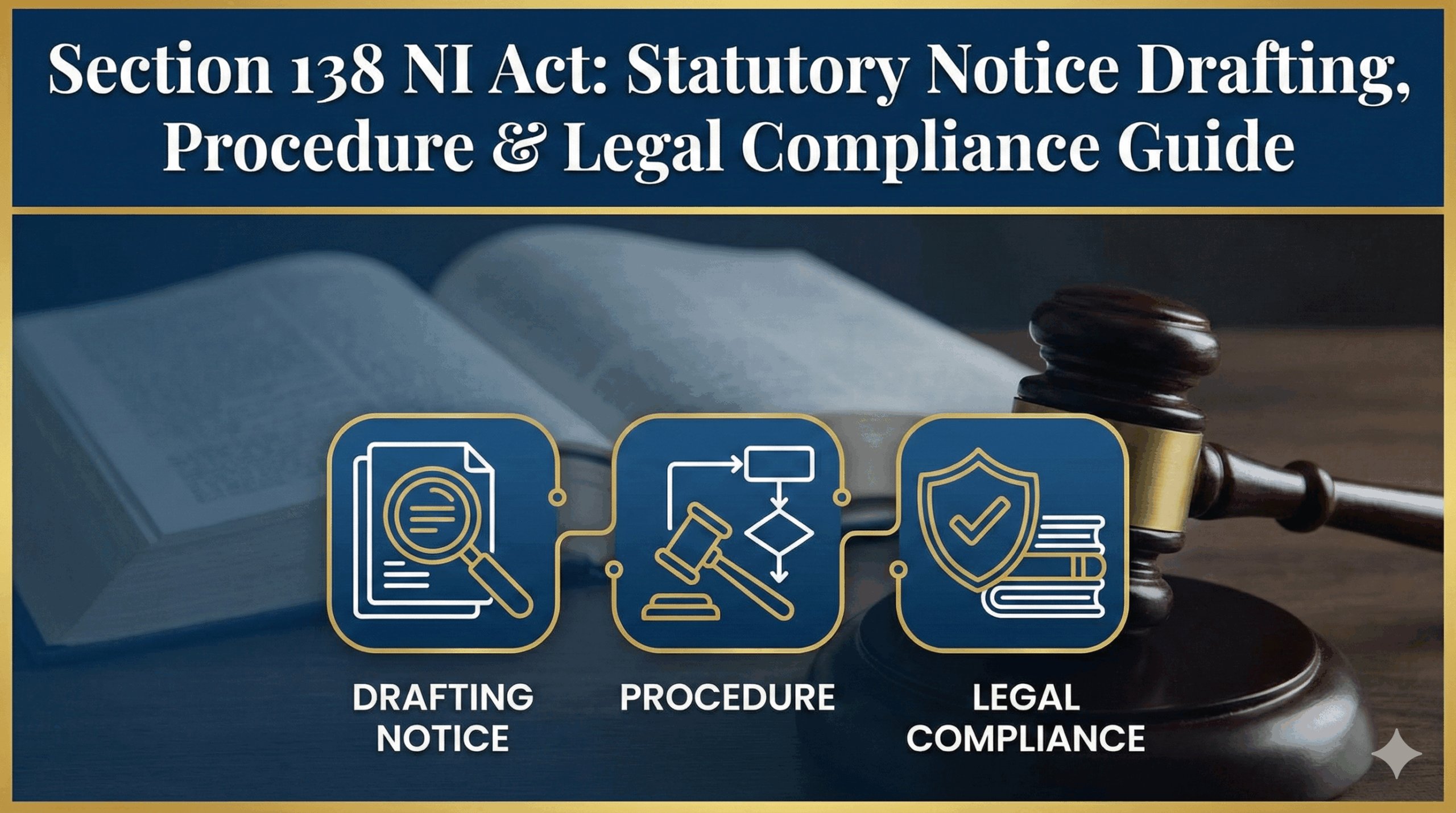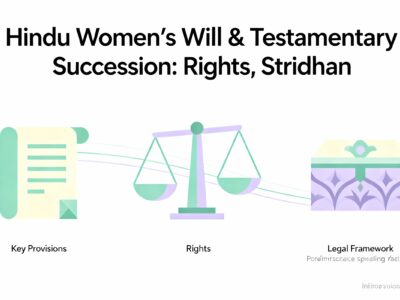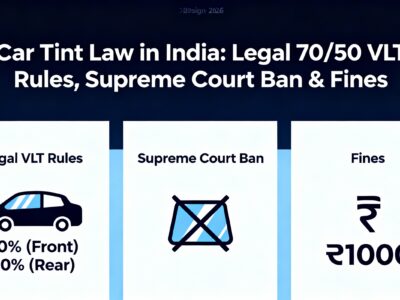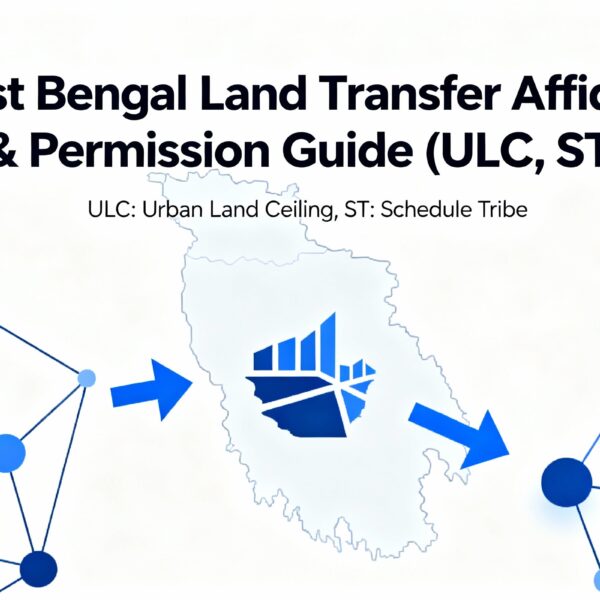Sidelined at Work in India? Your Legal Rights for Constructive Demotion & Unfair Labour Practices
Have you poured your effort into a major project, achieved success, and then found yourself inexplicably sidelined for a new hire? This frustrating and demoralizing experience is more than just a workplace setback; it could be a case of constructive demotion or an unfair labour practice under Indian labour law. Navigating your legal rights in this situation is critical.
This comprehensive guide, it provides a strategic roadmap to protect your career. We will break down the crucial distinction between a “workman” and “non-workman,” show you how to gather essential evidence, and outline the steps for seeking legal redressal, from sending a formal legal notice to pursuing your case in court.
Sidelined After Success?
An in-depth guide to your legal rights in India when your contributions are overlooked and your role is diminished. Updated for September 2025.
What's Your Situation?
Filter the key takeaways below based on your employment status.
Section 1: Preliminary Legal Assessment
1.1 Translating Grievance into Legal Terms
The scenario—excelling at a project, only to be sidelined for a new hire—isn't just a workplace grievance. It's a sequence of events with potential legal claims under Indian employment law. Your success establishes a record of high performance, making it difficult for the employer to justify adverse actions based on performance.
1.2 The Critical Question: Are you a "Workman"?
This is the most crucial factor determining your legal path. The Industrial Disputes Act, 1947, provides significant protections to "workmen." Your designation doesn't matter; the primary nature of your duties does. This flowchart can help you assess your status.
Flowchart: Determining Your "Workman" Status
Indicative of "Workman" Status
- Performing technical tasks (e.g., coding, design)
- Direct execution of project tasks
- Operational or clerical work
- No authority to hire, fire, or appraise others
Indicative of "Non-Workman" Status
- Mainly managerial or administrative duties
- Authority to sanction leave or appraise performance
- Power to hire, dismiss, or take disciplinary action
- Represents management in key decisions
1.3 Breach of Contract or Statutory Violation?
The actions against you can be challenged on two fronts. Firstly, as a **breach of your employment contract**, which defines your role and responsibilities. A unilateral, detrimental change can be a fundamental breach. Secondly, if you are a "workman," it could be a **statutory violation** of the Industrial Disputes Act, such as an Unfair Labour Practice or a change in service conditions without notice.
Section 2: Managerial Prerogative & Its Limits
Employers have the right to organize their business (Managerial Prerogative). However, this right is not absolute. It is limited by the duty to act in good faith and deal fairly with employees. The judiciary acts as a check against decisions that are arbitrary, malafide (in bad faith), or acts of victimisation.
The Legal Balance
Section 3: Unilateral Changes & "Constructive Demotion"
Your job role and responsibilities are a core part of your employment contract. An employer cannot change them detrimentally at will. The scenario described is a classic example of **"Constructive Demotion"**: a demotion in substance, not in form, even if your title and salary remain unchanged.
Visualizing Constructive Demotion
Expected Path
Your success leads to growth and increased responsibility.
Constructive Demotion Path
Your success is followed by being stripped of duties and authority.
3.2 Section 9A, Industrial Disputes Act, 1947
For "workmen," this is a powerful shield. Section 9A mandates a 21-day notice before any adverse change in service conditions. Failure to provide this notice can render the change legally void from the start.
Section 4: Identifying Unfair Labour Practices (ULPs)
The Fifth Schedule of the Industrial Disputes Act, 1947, lists actions that are illegal ULPs. Framing your manager's conduct as a ULP elevates your grievance from a simple dispute to a statutory offense. The actions in your scenario map directly to several ULPs.
Comparison: Your Experience vs. The Law
| Your Experience | Corresponding ULP (Industrial Disputes Act) | Legal Implication |
|---|---|---|
| Manager brings in and praises a new person, ignoring your contribution. | Item 9: "To show favouritism or partiality... regardless of merit." | Action is based on preference, not performance, violating the law. |
| The new person takes over your successful project without a valid reason. | Item 5(b): Action "not in good faith, but in the colourable exercise of the employer's rights." | The reassignment is likely a disguised punitive action, not a genuine business decision. |
| Being sidelined immediately after a major project success. | Item 5(a): An act of "victimisation." | The adverse action illogically follows success, suggesting a retaliatory motive. |
Section 5: Mental Harassment
The manager's actions, creating a hostile and humiliating environment, can be legally characterized as mental harassment. This infringes on your Right to Dignity under Article 21 of the Constitution. It's not just about a single act, but a pattern of conduct designed to undermine you.
Section 6: Constructive Dismissal
If the work environment becomes so intolerable that you are forced to resign, the law may treat it as a termination by the employer, known as "Constructive Dismissal" or "Forced Resignation." This is a high-risk strategy and should be a last resort after documenting all prior injustices.
Section 7: The Crucial Role of Evidence
In any legal dispute, the strength of your case depends on the quality of your evidence. Mere allegations are insufficient; you must substantiate your claims with concrete proof. Start documenting everything methodically and discreetly from the moment you sense a problem.
Your Evidence Gathering Toolkit
Digital Communication
- Emails (official and personal accounts)
- Chat logs (Teams, Slack, WhatsApp)
- Task assignments (Jira, Asana)
- Official announcements
Official Documents
- Appointment Letter / Contract
- Appraisal/Performance Reviews
- Pay slips (to show no salary cut)
- Project documentation
- Company Policies / HR Manual
Personal Records
- A detailed personal diary/log of events
- Dates, times, and locations of incidents
- Names of witnesses if any
- Record of your emotional/mental state
IMPORTANT: Ensure your evidence collection complies with company policy and privacy laws. Avoid recording conversations without consent where prohibited.
Section 8: A Strategic Roadmap for Redressal
Navigating a workplace dispute requires a methodical approach. The Indian legal system provides a tiered process designed to encourage early resolution. Follow these steps to build your case and maximize leverage.
Phase 1: Internal Grievance & Documentation (Weeks 1-4)
This is the foundation of your case. Formally and professionally raise your concerns through official channels. Send a detailed email to your manager (cc'ing HR) outlining the changes to your role, referencing your past successes, and asking for clarification. This creates a crucial paper trail. The objective is not necessarily to win, but to have your grievance officially recorded and their (often inadequate) response documented.
Phase 2: Sending a Legal Notice (Month 2)
If the internal grievance process fails or is ignored, the next step is to engage a lawyer to send a formal Legal Notice. This document outlines your entire case, lists the specific laws violated (e.g., breach of contract, ULPs), details your demands (e.g., reinstatement of duties, compensation), and states the intention to pursue legal action if a resolution is not reached. This show of serious intent often brings employers to the negotiation table.
Phase 3: The Conciliation Process (Months 3-6)
For "workmen", this is a mandatory step. After sending the notice, your lawyer will approach the government's Conciliation Officer. This officer acts as a neutral mediator, facilitating talks between you and your employer to find a mutually agreeable settlement. While not legally binding, it's a highly effective and cost-efficient forum for resolution. For "non-workmen," this is an optional but often recommended mediation step.
Phase 4: Adjudication - The Labour/Civil Court (Month 6+)
If conciliation fails, the dispute is referred for adjudication. "Workmen" go to the Labour Court or Industrial Tribunal. "Non-workmen" must file a civil suit in a Civil Court. This is a full-fledged legal battle where evidence is presented, witnesses are cross-examined, and a judge delivers a binding verdict. This is the longest and most expensive phase, undertaken only when other avenues have failed.
Section 9: The Impending Shift: New Labour Codes
Current Status
As of Sept 2025, the new codes are NOT fully implemented. The Industrial Disputes Act, 1947, is still in force.
Key Change: "Worker" Definition
The new "worker" definition is broader than "workman," potentially offering protection to more employees.
Your Strategy
Proceed under the current law (IDA, 1947). The core principles of fairness and protection against victimisation are retained in the new codes.
Section 11: Landmark Judgements & Precedents
Indian courts have consistently intervened to protect employees from arbitrary and malafide actions of employers. These landmark cases establish the legal principles that underpin your rights.
Glaxo Laboratories v. Presiding Officer, Labour Court
Principle: Established that "Managerial Prerogative" is not absolute. An employer's action, even if seemingly legal, can be struck down if it is found to be unfair, arbitrary, or an act of victimisation. This case is crucial for challenging actions done in "colourable exercise" of power.
The Workmen of M/s. Williamson Magor & Co. Ltd. v. M/s. Williamson Magor & Co. Ltd.
Principle: Defined "Unfair Labour Practice" broadly. It confirmed that actions that are unjust and unfair, intended to wrongfully dismiss or harm an employee's interests, fall under this category, even if not explicitly listed in the statute.
Deepali Gundu Surwase v. Kranti Junior Adhyapak Mahavidyalaya
Principle: While this case deals with wrongful termination, the Supreme Court laid down the principle of "no work, no pay" not being applicable when the employee was wrongfully prevented from working. This can be relevant in arguments for compensation for the period of "constructive demotion."
U.P. State Brassware Corpn. Ltd. v. Uday Narain Pandey
Principle: The burden of proof is on the employee to show they were illegally terminated or victimised. This highlights the absolute necessity of the meticulous evidence gathering discussed in Section 7.
Section 12: Frequently Asked Questions
Section 13: Anonymous Case Studies
Case Study 1: The Sidelined Tech Lead
"Priya," a tech lead, successfully delivered a critical software module. Her manager then hired a new architect who was given ownership of Priya's module for "phase 2." Priya was reassigned to minor bug fixes. She was a "workman" due to her technical duties. She documented the change, filed an internal grievance, and her lawyer sent a notice citing ULP (favouritism) and Section 9A violation. The company, facing a strong case, settled during conciliation, restoring her responsibilities and providing a written apology.
Case Study 2: The Demoted Sales Manager
"Amit," a regional sales manager ("non-workman"), was stripped of his key accounts after a record-breaking quarter. The accounts were given to a junior colleague. His title and salary were unchanged. His lawyer filed a civil suit for breach of contract, arguing constructive demotion. The detailed performance reports and emails showing the abrupt change in duties were key evidence. The court case was lengthy, but he received significant damages for loss of reputation and future earnings.
Section 14: Interactive Action Checklist
Use this interactive checklist to track your progress. Your selections will be saved in your browser, so you can return to this page later to continue. This is your personal roadmap to building a strong case.
Your Progress
0/10 CompletedSection 15: Legal Notice Draft Template
Disclaimer: This is a sample template for educational purposes only. It is NOT a substitute for professional legal advice. A legal notice is a critical document that must be drafted and sent by a qualified advocate based on the specific facts of your case.
Draft Legal Notice
[Date]
To,
[Employer's Name/Company Name]
[Company's Registered Address]
Subject: Legal Notice for Breach of Employment Contract, Constructive Demotion, and Unfair Labour Practices against Mr./Ms. [Your Name]
Dear Sir/Madam,
Under instructions from and on behalf of my client, Mr./Ms. [Your Name], residing at [Your Address], I hereby serve you with the following legal notice:
- That my client was appointed to the post of [Your Designation] vide appointment letter dated [Your Date of Joining] and has since been performing their duties with utmost diligence and to the complete satisfaction of the management.
- That my client was instrumental in the successful completion of the [Name of Project], which was delivered on [Date of Project Completion]. My client's performance was appreciated by [Manager's Name].
- That subsequent to this success, instead of being rewarded, my client was systematically sidelined. On or around [Date of New Hire Joining], a new employee, Mr./Ms. [New Hire's Name], was brought on board and was unjustifiably given charge of my client's primary responsibilities, including the next phase of the aforementioned project.
- That this constitutes a unilateral and detrimental alteration of my client's service conditions, amounting to a 'constructive demotion' and a fundamental breach of the employment contract. My client's role has been reduced to tasks of a trivial nature, which is an act of humiliation and mental harassment.
- That your actions are malafide, constitute an act of victimisation, and show undue favouritism, which are Unfair Labour Practices as defined under the Industrial Disputes Act, 1947. Furthermore, no notice under Section 9A of the said Act was provided to my client, rendering the changes legally void.
Therefore, through this notice, you are hereby called upon to:
- Immediately reinstate my client to their original roles and responsibilities.
- Provide a written apology for the mental harassment and humiliation caused.
- Pay a sum of ₹[Amount] as compensation for the loss of reputation and professional standing.
Awaiting your compliance within 15 (fifteen) days from the receipt of this notice, failing which my client will be constrained to initiate appropriate civil and/or criminal proceedings against you at your risk and cost.
Sincerely,
[Advocate's Name]
[Advocate's Address/Office]
Section 16: Conclusion and Strategic Recommendations
Your situation presents a strong case of workplace injustice. The law provides multiple avenues for redressal. The key is to act strategically, document everything, and seek professional legal advice early.
Immediate Action Checklist (Next 7 Days)
- Begin Meticulous Documentation: Start a private log of all incidents, conversations, and changes.
- Secure Your Contract: Find your appointment letter and any relevant company policies.
- Assess "Workman" Status: Objectively analyze your daily duties using the flowchart above.
- Do Not Resign: Resigning now will significantly weaken your legal position.









